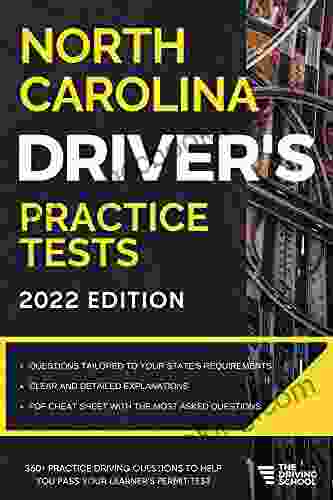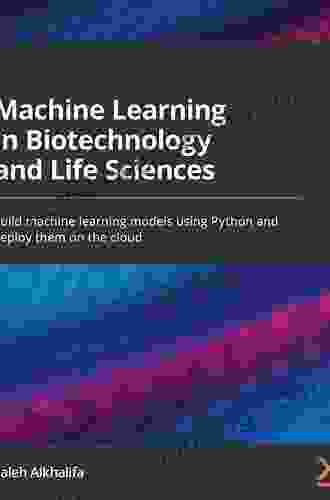Build Machine Learning Models Using Python And Deploy Them On The Cloud

Machine learning is a powerful tool that can be used to solve a wide range of problems, from predicting customer churn to detecting fraud. However, building and deploying machine learning models can be a complex and challenging task, especially for beginners.
4.2 out of 5
| Language | : | English |
| File size | : | 27187 KB |
| Text-to-Speech | : | Enabled |
| Screen Reader | : | Supported |
| Enhanced typesetting | : | Enabled |
| Print length | : | 408 pages |
This guide will teach you everything you need to know to build and deploy machine learning models using Python. You'll learn about:
- Data preparation and feature engineering
- Model training and evaluation
- Model deployment on the cloud
By the end of this guide, you'll be able to build and deploy your own machine learning models with confidence.
Data Preparation and Feature Engineering
Data preparation and feature engineering are two of the most important steps in the machine learning process. Data preparation involves cleaning and transforming your data so that it can be used by your machine learning model. Feature engineering involves creating new features from your data that can be used to improve the performance of your model.
There are a number of different data preparation and feature engineering techniques that you can use. The best techniques for your project will depend on the specific data that you have and the type of machine learning model that you are building.
Data Cleaning
Data cleaning is the process of removing errors and inconsistencies from your data. This can involve removing duplicate rows, filling in missing values, and correcting data formatting errors.
There are a number of different tools that you can use to clean your data. Some popular tools include:
- Pandas
- NumPy
- Scikit-learn
Feature Engineering
Feature engineering is the process of creating new features from your data that can be used to improve the performance of your machine learning model. This can involve:
- Combining multiple features into a single feature
- Creating new features based on mathematical operations
- Creating new features based on domain knowledge
Feature engineering is a complex and challenging task, but it can have a significant impact on the performance of your machine learning model.
Model Training and Evaluation
Once you have prepared your data and engineered your features, you can begin training your machine learning model. Model training is the process of fitting your model to your data so that it can make accurate predictions.
There are a number of different machine learning algorithms that you can use to train your model. The best algorithm for your project will depend on the type of data that you have and the task that you are trying to solve.
Once you have trained your model, you need to evaluate its performance. This can involve:
- Calculating the model's accuracy
- Plotting the model's learning curve
- Performing cross-validation
Model evaluation is important because it helps you to understand how well your model is performing and identify any areas that need improvement.
Model Deployment on the Cloud
Once you have trained and evaluated your machine learning model, you can deploy it on the cloud so that it can be used to make predictions on new data.
There are a number of different cloud platforms that you can use to deploy your machine learning model. Some popular platforms include:
- Our Book Library Web Services (AWS)
- Microsoft Azure
- Google Cloud Platform (GCP)
Each of these platforms provides a variety of tools and services that can help you to deploy and manage your machine learning model.
This guide has provided you with a comprehensive overview of how to build and deploy machine learning models using Python. By following the steps in this guide, you'll be able to build and deploy your own machine learning models with confidence.
If you're interested in learning more about machine learning, I recommend checking out the following resources:
- Machine Learning Coursera
- Scikit-learn User Guide
- TensorFlow User Guide
4.2 out of 5
| Language | : | English |
| File size | : | 27187 KB |
| Text-to-Speech | : | Enabled |
| Screen Reader | : | Supported |
| Enhanced typesetting | : | Enabled |
| Print length | : | 408 pages |
Do you want to contribute by writing guest posts on this blog?
Please contact us and send us a resume of previous articles that you have written.
 Book
Book Novel
Novel Page
Page Chapter
Chapter Text
Text Story
Story Genre
Genre Reader
Reader Library
Library Paperback
Paperback E-book
E-book Magazine
Magazine Newspaper
Newspaper Paragraph
Paragraph Sentence
Sentence Bookmark
Bookmark Shelf
Shelf Glossary
Glossary Bibliography
Bibliography Foreword
Foreword Preface
Preface Synopsis
Synopsis Annotation
Annotation Footnote
Footnote Manuscript
Manuscript Scroll
Scroll Codex
Codex Tome
Tome Bestseller
Bestseller Classics
Classics Library card
Library card Narrative
Narrative Biography
Biography Autobiography
Autobiography Memoir
Memoir Reference
Reference Encyclopedia
Encyclopedia Ruth Garner
Ruth Garner Zhongwen Fu
Zhongwen Fu Rick Malaspina
Rick Malaspina The College Board
The College Board Taylor Armstrong
Taylor Armstrong William Gilbert
William Gilbert Rhonda Batchelor
Rhonda Batchelor Stacey Williams
Stacey Williams Rick Stanton
Rick Stanton Stephen M Lind Jd Atp
Stephen M Lind Jd Atp Tony Mitton
Tony Mitton Samantha Boardman
Samantha Boardman Scott Schell
Scott Schell Raymond Bonner
Raymond Bonner Steve Chandler
Steve Chandler Rutu Modan
Rutu Modan R A Scotti
R A Scotti Ronald D Mcelroy
Ronald D Mcelroy Randy Walters
Randy Walters Sally Blake
Sally Blake
Light bulbAdvertise smarter! Our strategic ad space ensures maximum exposure. Reserve your spot today!

 Colton CarterEverything You Need to Know About Getting Pregnant: A Comprehensive Guide for...
Colton CarterEverything You Need to Know About Getting Pregnant: A Comprehensive Guide for...
 Ervin BellUnravel the Sinister Secrets of Treachery in Tarnstead: A Captivating Journey...
Ervin BellUnravel the Sinister Secrets of Treachery in Tarnstead: A Captivating Journey...
 Dalton FosterUnlocking the Secrets to Pre-Med Success: An In-Depth Review of "The Pre-Med...
Dalton FosterUnlocking the Secrets to Pre-Med Success: An In-Depth Review of "The Pre-Med... D'Angelo CarterFollow ·10.2k
D'Angelo CarterFollow ·10.2k Henry HayesFollow ·6.2k
Henry HayesFollow ·6.2k Shane BlairFollow ·14.8k
Shane BlairFollow ·14.8k Caleb LongFollow ·12.3k
Caleb LongFollow ·12.3k Brody PowellFollow ·15k
Brody PowellFollow ·15k Branden SimmonsFollow ·17.8k
Branden SimmonsFollow ·17.8k Geoffrey BlairFollow ·15k
Geoffrey BlairFollow ·15k Dan HendersonFollow ·4.1k
Dan HendersonFollow ·4.1k

 Steven Hayes
Steven HayesEmbark on Unforgettable Adventures: Discover the Best of...
Unveiling the Enchanting Trails of the...

 Jarrett Blair
Jarrett BlairMaster the Road: Ace Your North Carolina Driver's Test...
Unlock the Secrets to...

 Brent Foster
Brent FosterDk Essential Managers Understanding Accounts: Your...
In today's...

 Isaac Mitchell
Isaac MitchellPrognosis: A Memoir of My Brain - A Journey of Hope and...
In 2013, Eve Ensler was diagnosed with a...
4.2 out of 5
| Language | : | English |
| File size | : | 27187 KB |
| Text-to-Speech | : | Enabled |
| Screen Reader | : | Supported |
| Enhanced typesetting | : | Enabled |
| Print length | : | 408 pages |










